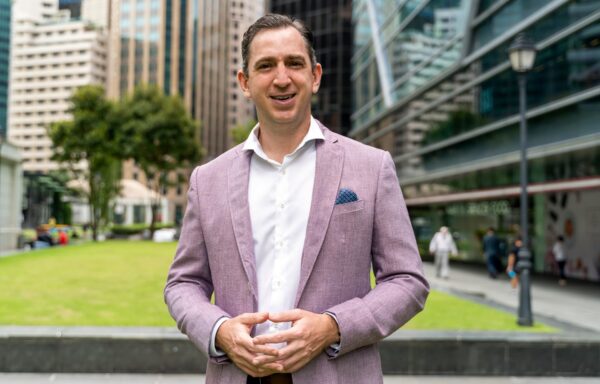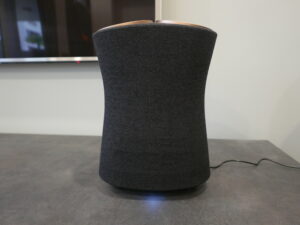
Putting out an app may seem easy but how well it performs and how it is experienced by users are now measured in minute detail and in real-time, so that it can be constantly improved.
Such measurements also enable organisations to better plan for the amount of cloud resources needed, for example. Sometimes, the visibility into how an app works also helps the development of the app itself, as was the case in India’s development of a Covid-19 contact tracing app last year.
This is possible because of a single, consolidated view of what was going on, so that various teams working on the app could quickly respond to new requirements, said Ben Goodman, senior vice-president for Asia for New Relic, the company that provided the “telemetry” for the project.
In this month’s Q&A, he tells Techgoondu why such insights will be critical to the digital efforts of businesses and governments in the years ahead.
NOTE: Reponses have been edited for brevity and house style.
Q: Tell us more about the Indian contact-tracing app. Briefly, how did New Relic’s tools make a difference in terms of measuring user experience?
A: The pace at which this application both had to be developed and the number of organisations involved with it, meant that the potential complexity was significant.
How do you give everyone who’s involved a single consolidated view of what’s going on? Whether it’s page load time, whether it’s scaling out the cloud back-end to support the scale as it grows through India, whether it’s quickly integrating updates from the government.
This is really where the New Relic tools made a difference. New Relic enabled all the organisations involved in building this application to have a single consolidated view of what was actually happening.
What were the customers experiencing? How many were using it? How many were having good experiences, bad experiences? And how could they quickly roll out new versions of the application to either address current experienced challenges, or integrate new requirements from the government? It’s really the collaboration, the insight and the real-time monitoring that made a difference.
Q: What types of data are your customers most interested in trying to measure?
A: This depends on the use case. A lot of organisations focus more on the browser mobile experience. What kind of experience is my end user having through the digital journey or the digital experience through whatever platform that is?
And when we look at the telemetry data people want to collect, it’s insights like page load time, successful transaction time, the ability to understand the integrated experience from the start of a transaction all the way through to the end of that transaction. This could be booking a flight or registering for a government service.
The many metrics, events, logs, and traces help to understand the real time experience of a customer, and that’s what people are focused on data-wise when they look at the front of house.
When it comes to the back of house, this is more focused on optimising costs, reducing risk. A lot of telemetry data being collected looks at two elements – are our systems performing the way they should, and are they potentially trending towards red lights?
If an organisation is monitoring the back-end cloud operations, and they start to recognise that the front-end load is going to enable them to exhaust all their cloud capacity in the back end, how can it quickly scale and integrate to grow their cloud footprint faster?
If a critical application goes down, and they’re unable to work out what exactly is taking this application down, this is very much on the risk mitigation side. You’ll be collecting data from networking platforms, servers, applications, end user devices, everything in the stack.
And a lot of that is around triage to isolate as quickly as possible to determine where the issue is. Is it in hardware? Is it in software? Is it a network? Or is it an incline?
New Relic collects data across all spectrums. This helps our customers understand their clients’ experience, and have a holistic perspective of the interactions so they can scale up their back-end systems and support business growth.
Q: How often does data from your measurements conflict with what is sensed, say, on other equipment measurement tools?
A: You can measure different applications in different ways. And depending on whether you take an application-centric point of view, or an infrastructure-centric point of view, or a browser-centric point of view or a mobile-centric point of view, you can get very conflicting data sets.
The reason why New Relic exists is to actually remove that conflict. The job of New Relic One is to instrument across the entire customer journey. So we’re able to relate a front-end mobile user’s experience on the back-end with application issues, infrastructure issues, networking issues, and everything in between.
And so for organisations that adopt New Relic pervasively across their entire stack, we very rarely see conflicts coming up. Because we have that lens, we’re able to quickly triage and identify where the issue is.
Where organisations have multiple tools that are looking at just one perspective, and they’re unable to correlate that data because the silos do not allow the exchange of insight, that’s where we see conflict and issues coming up.
And the main reason why we see lots of organisations consolidating multiple tools into New Relic One, is to avoid that conflict that has traditionally happened when you’ve got silos of data.
Q: Between gaining intelligence and executing with it, there is usually lag for many large companies. Does New Relic’s data change this?
A: The simple answer is absolutely. And this is through what I just mentioned previously around the ability to consolidate disparate tools and disparate data sets into a single consolidated view.
Our telemetry data platform collects all types of events, metrics, logs and traces. This gives us the ability to have a real-time view as to what’s going on and actually remove that lag.
The ability to quickly instrument an entire customer journey and understand it – sometimes even ahead of when a customer has a bad experience – helps an organisation address that.
And through New Relic’s Applied Intelligence, we actually give the organisations the ability to automate recommendations, and actually implement change in real-time through the adoption of AI and machine learning.
Now, again, some organisations are capable of leveraging this technology and using it in real-time to really drive that transformation. Other organisations that are more process-bound and more traditional in nature, even with the technology, may not have the governance model and operating model to actually leverage this to the fullest extent.
But we’re seeing this change rapidly. So from a technology perspective, with New Relic, there’s absolutely no lag. It comes down more to the organisational maturity and the ability to actually leverage the technology.






